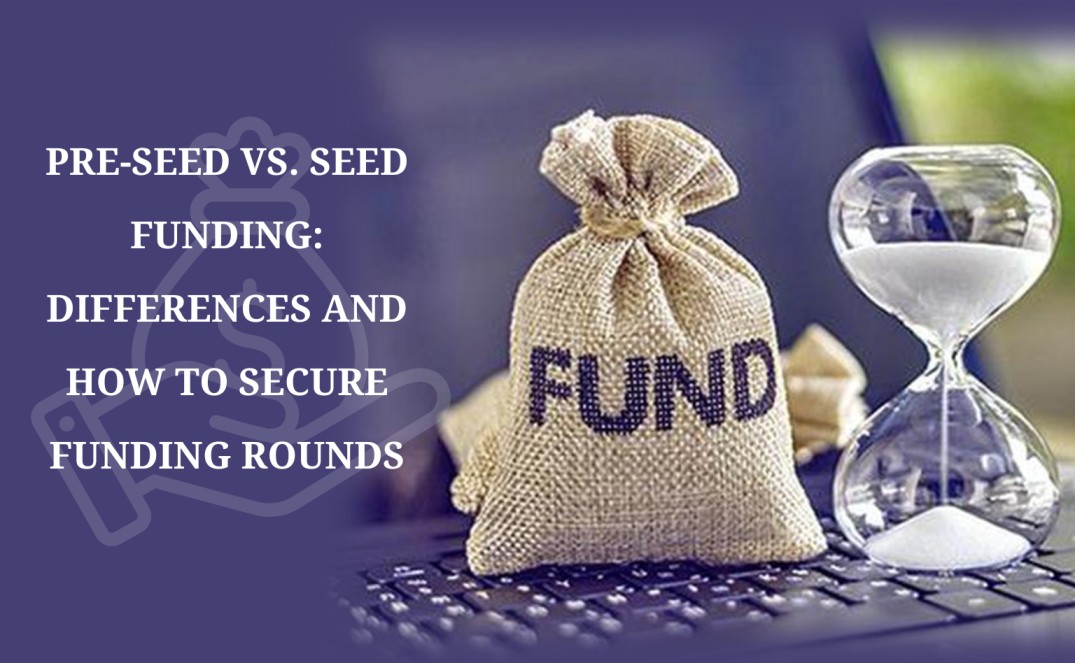Congratulations! You’ve founded your own company and are ready to build it from the ground up. Someone asks you, “so, how is your funding?” Good, you reply. “Are you on your pre-seed or seed round?”
If you’ve ever blanked at that question, it’s okay. And if these terms are unfamiliar or fuzzy to you, we here at ALCOR will take care of you.
In this article, we will go over the defining characteristics and differences between these two rounds and types of funding and which you, as a startup founder, can and would want to choose based on your stage.
This article will break down the nuances and help illustrate seed funding vs. Series A or other series funding. Let’s get started:
- Pre-Seed Funding
- Seed Funding
- How To Choose the Right Financing For You
- Getting Funded
What is Pre-Seed Funding?
Both terms, pre-seed, and seed, call to mind either gardening or biology. So in a sense, they describe the company/startup as a living organism, and each term describes a different financing round.
Pre-seed financing is the first sprinkling or dose of funding you ever raise for your company. Typically, this is sourced from your family, friends, and angel investors. However, no institutional investors have yet been involved.
The pre-seed financing usually ranges from US$ 50,000 to $250,000 (what a typical primary network can supply). This round’s proceeds are usually for prototyping, idea origination, or general, administrative, and organizational expenses such as rent, supplier payments, and working capital.
Given this use of proceeds and funding size, therefore, it is common to use pre-seed funding in the following scenarios:
- To develop a prototype, or a Minimal Viable Product (MVP) for piloting, feedback, and initial market feedback
- To further expand and develop an existing MVP, to get further feedback/market testing and product-market fit
Congruent is the underlying need to expand your operations as you ramp up your business. Pre-seed funding will usually, and in some cases, necessarily include spending on overhead (i.e., rent), hiring and salaries (especially building your co-founding team and initial c-suite), and also for initial expenditure on customer acquisition (such as paid ads).
In some cases, pre-seed funding will take a convertible note, a form of debt that converts to equity following a specified event or period.

What is Seed Funding?
Seed funding and pre-seed funding differ depending on the amount of seed raised. This kind of financing typically floats between US$250,000 to $2,000,000 depending on both your particular industry and startup’s stage:
- Entirely digital, or digitally-native, business models (such as data analysis, SaaS, online marketplaces and eCommerce, technology applications, etc.) tend to devote funding towards hiring, and R&D and usually raise less;
- Capital expenditure (capex) intensive businesses such as construction tend to increase significant seed rounds out of necessity due to high startup costs such as property, plant, and equipment (e.g., car washes).
Venture Capital Firms
A seed round’s investor profile differs from a pre-seed. For example, financial firms, such as venture capital firms, invest in early-stage companies, and institutional investors are usually tapped.
Depending on the location, VC firms can also be specialized. For example, there are seed VC firms that specialize only or predominantly in seed funding, unlike other firms which are Series A+ specific. For seed VC funds, a common condition is an equity percentage in the company, as their mandate is to look for and invest in high-risk but early-stage companies.
Angel Investors
Angel investors are still in the seed round but are usually no longer the lead investors. Their tickets (investment size) are usually more minor and follow the larger VC firms.
Your startup typically has some incipient success, market size, and the following to be able to raise seed funding sizes:
- A working MVP;
- Tested and proven market feedback and fit;
- A measure of financial success in your financial statements;
- A set up’ co-founding team’.
The best way to write your organization’s future is to plan it whether pre-seed or seed, a key determinant for successful funding is the planning, allocation, and strategizing of your startup costs. Check out the guide to startup cost planning.
How To Choose Pre-Seed or Seed Funding
So now we have broken down the differences between the two financing rounds. Based on your company’s position, timeline and operations, it is ultimately up to you as the founder to decide whether to raise pre-seed or seed funding.
Specific attributes help make a difference. For example, credentials and professional history/track record can help you raise seed funding in more significant amounts, even with a still-in-the-works MVP. This usually happens when one or more founders have a strong experience in the field and have already successfully founded a startup (and may or may not have exited).
VCs involved in seed rounds invest, above all, in the founder(s) and the co-founding team. If the team already has a proven record of raising and successfully deploying seed capital, this builds confidence in VCs.
What ultimately matters is the investor capital. So the investor profile and amount can classify what kind of fundraising you’re doing.
Nonetheless, knowledge is power, and understanding the difference between the two makes you a savvier and more proficient founder, who can make informed and better decisions about the amount you need to raise, and the investor profile and conditions you will tap to do so. So if you want your financing procedure to last the distance, do your due diligence before fundraising.
Getting Funded
It’s important to plan, pitch, and have materials to deliver during a pre-seed or seed funding presentation. This includes your business plan, pitch deck, and financial model.
ALCOR is here to help you with all your needs. Get started by learning how to build a robust but straightforward startup financial model with everything you need here.








